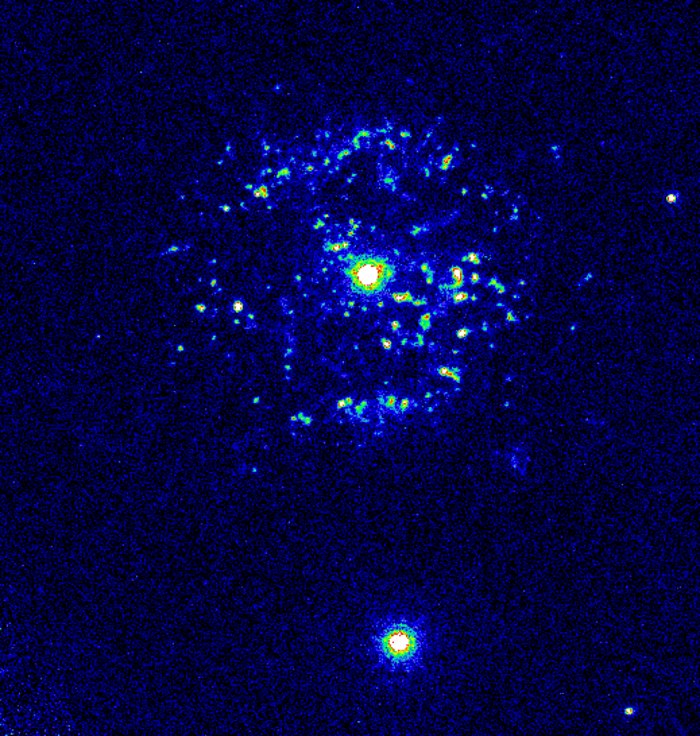Recurring Nova T Pyxidis
Closer inspection by the Hubble Space Telescope, however, reveals that the shells are not smooth at all. In fact, this high-resolution image shows that the shells are actually more than 2, 000 gaseous blobs packed into an area that is 1 light-year across. Resembling shrapnel from a shotgun blast, the blobs may have been produced by the nova explosion, the subsequent expansion of gaseous debris, or collisions between fast-moving and slow- moving gas from several eruptions. False colour has been applied to this image to enhance details in the blobs.
Credit:Mike Shara, Bob Williams, and David Zurek ( Space Telescope Science Institute); Roberto Gilmozzi (European Southern Observatory); Dina Prialnik (Tel Aviv University); and NASA/ESA
About the Image
About the Object
| Name: | T Pyxidis |
| Type: | Milky Way : Star : Type : Variable : Nova |
| Distance: | 15000 light years |
| Category: | Miscellaneous Stars |
Colours & filters
| Band | Telescope |
|---|---|
| Optical |
Hubble Space Telescope
WFPC2 |
